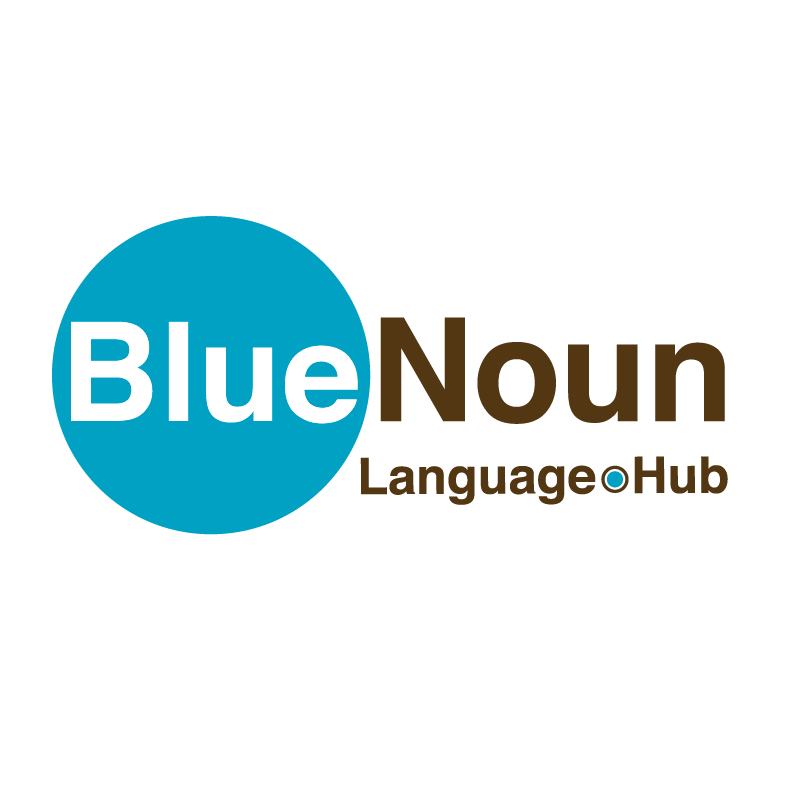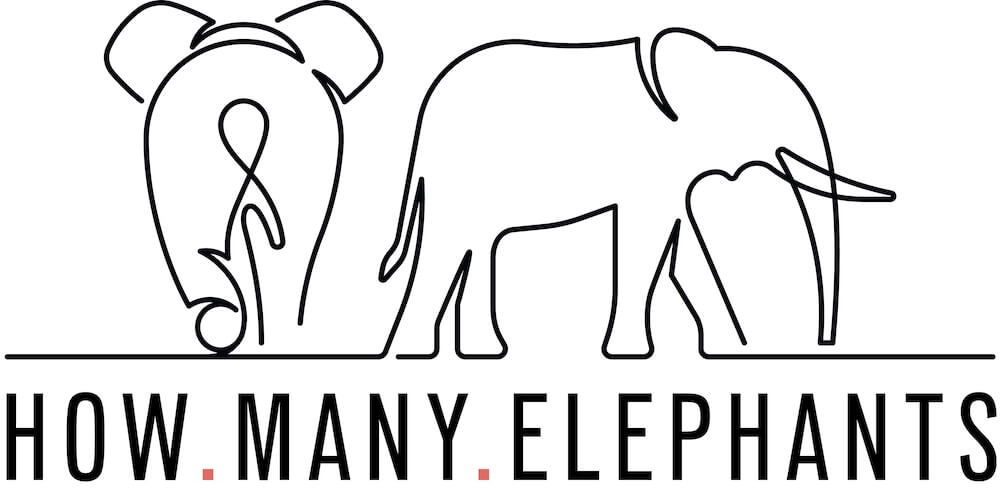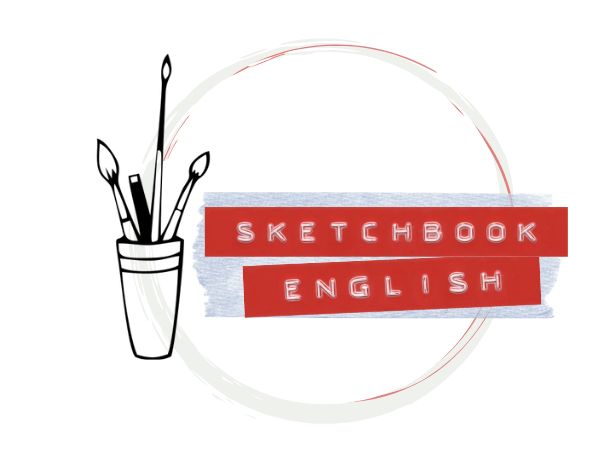How Many Elephants?
This is our second look at the How Many Elephants (HME) design campaign.
In our first blog, we looked at World Female Ranger Day (WFRD), which HME launched last week.
For today’s blog, we’re teaching language for English for Designers, by looking at the design campaigns and activism of HME founder Holly Budge.
To be clear, all images are used with permission.
HME want to spread the word and was happy to grant us permission to publish them on our blog.
Read on for a practice exercise at the end!
English Language Skills for Designers
There is so much to admire in Holly’s design work, ambition and activism.
By showing you her campaigns and discussing them here, I hope to give you professionally relevant art and design English phrases.
It also demonstrates some of the great conversations we could have if you join us live for an English immersion holiday!
Holly is a talented designer, but I think her vision is also one of a skilled conceptual artist. One of my passions is to celebrate creative solutions to problems, and especially community and ecology-related ones.
Read on and see what you think.
Meet Holly Budge
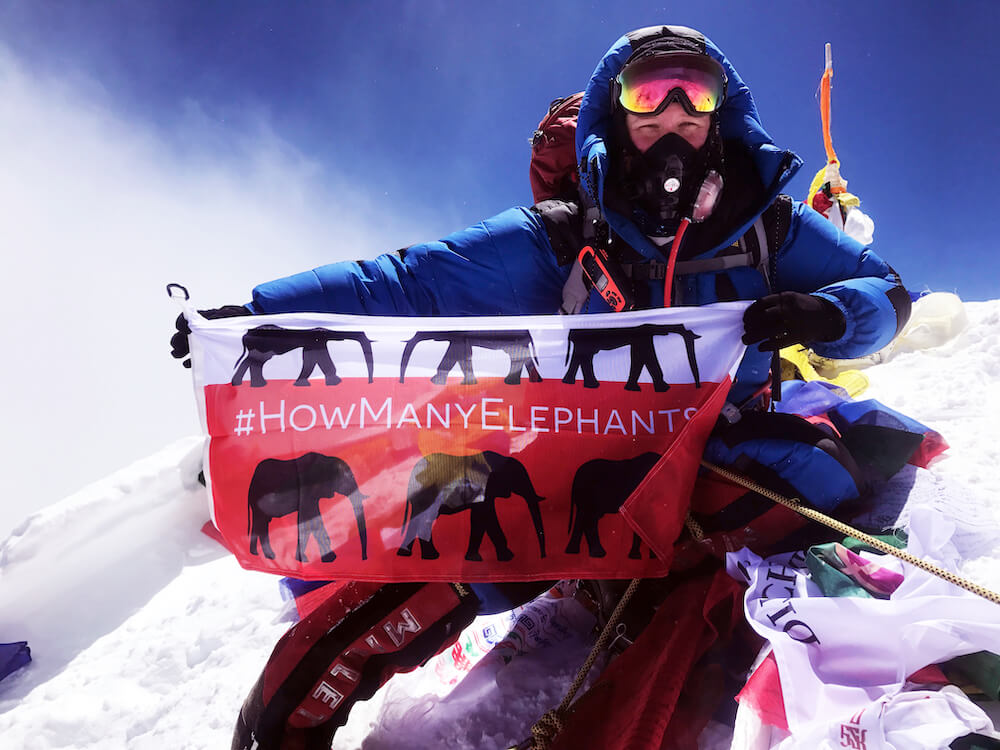
English for Designers | Meet Designer Holly Budge
International World Rangers Day first introduced me to the How Many Elephants campaign.
On further research, I discovered that its creator Holly, while known as a designer and fundraising charity founder, is perhaps even better known as a record-breaking explorer and adventurer.
I think it is this ambition that makes her design work so engaging. I hear about elephant poaching and I think, ‘how awful‘. She hears the same information and thinks, ‘let’s stop it!‘.
Holly has a website advertising her services as a keynote speaker which describes the day she decided to move halfway around the world to become a skydiving camerawoman.
At the time she had just one skydive under her belt – and no filmmaking training.
Her design work is simple and confident and sharpshooting.
(Perhaps if you skydive off mountains you become precise and efficient in every walk of life).
“Holly is a conservationist, a voice for Africa’s elephants, and a passionate supporter of female wildlife rangers. She is also a world-class adventurer, Everest summiteer, and the first woman to skydive Everest.
World Female Rangers Day website
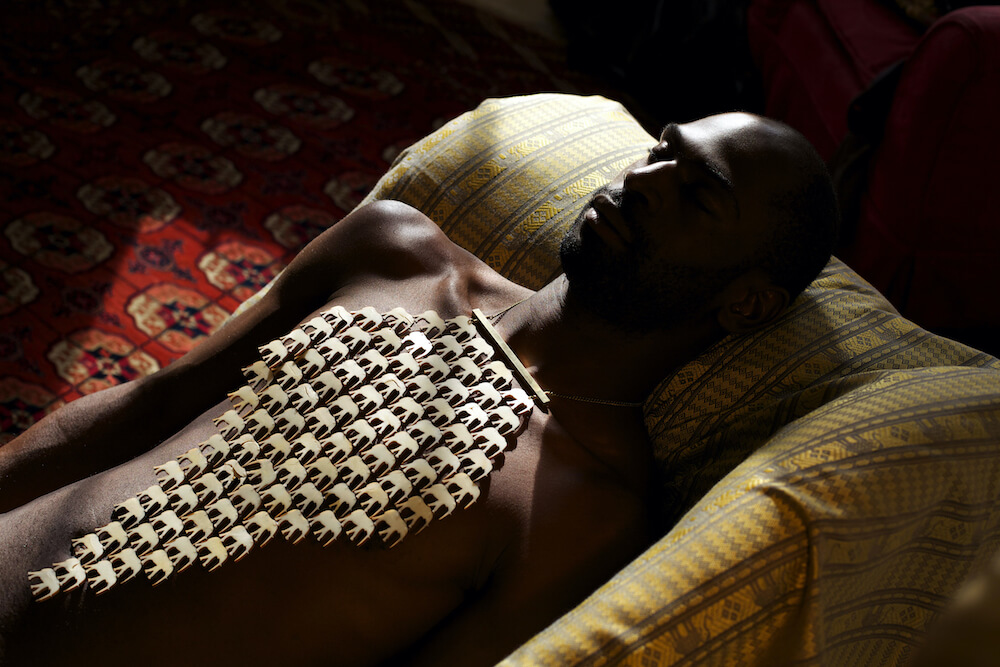
Life-Changing Design | Awareness Raising
In fact, the whole How Many Elephants charity began with the concept of the ‘96 Elephants a Day‘ necklace.
Holly created it when studying for her Masters in Sustainable Design.
It went on to win many design awards, including the prestigious Arts & Crafts Design Award.
The necklace is a stark visual representation of data.
Visually, it has some of the attributes of traditional indigenous African carved jewellery with its pure materials and large, chunky parts displayed familiarly on dark African skin.
However, unlike traditional African art, there are none of the freeform abstractions favoured over naturalistic representation, which characterises much of the continent’s creative work. African abstraction attracted Western artists like Picasso and Modigliani who were trying to break free of Western rules of depiction. They admired and felt liberated by what they saw. Its simplicity, sincerity, and expressive power gave them permission and inspiration to abstract.
Holly’s necklace is not just a simple, naturalistic representation of elephants either.
Instead, there’s a third path of visual representation which is simultaneously both perfectly representational and perfectly abstract.
It’s an Infographic.
The Graphic Illustration of Data
For any readers not familiar with the term, infographics present statistical information visually.
It’s highly skilled design work communicating whole and complex concepts and information as simply (and often as beautifully) as possible within a diagram.
When it’s done well infographics are easily read. Because the brain has to work slightly harder to decode the information, they are a memorable and powerful way of presenting information.
If anyone hasn’t already found the Information Is Beautiful website, check it out here.
The Unimaginable Gets Imagined.
Within Holly’s design are further messages to decode. The principal medium is vegetable ivory which is an ivory substitute nut product.
The medium speaks optimistically: it doesn’t have to be this way.
She has placed one elephant image made of hand-cut brass. This represents the poachers’ bullets.
One elephant faces the opposite way. This elephant represents the hope that this crisis can still be turned around.
With these tiny differences between the elephants they stop being statistics and become individuals – and suddenly every single one matters a little more.
“Using design as a powerful communication tool to bridge the gap between scientific data and human connection”.
Holly Budge
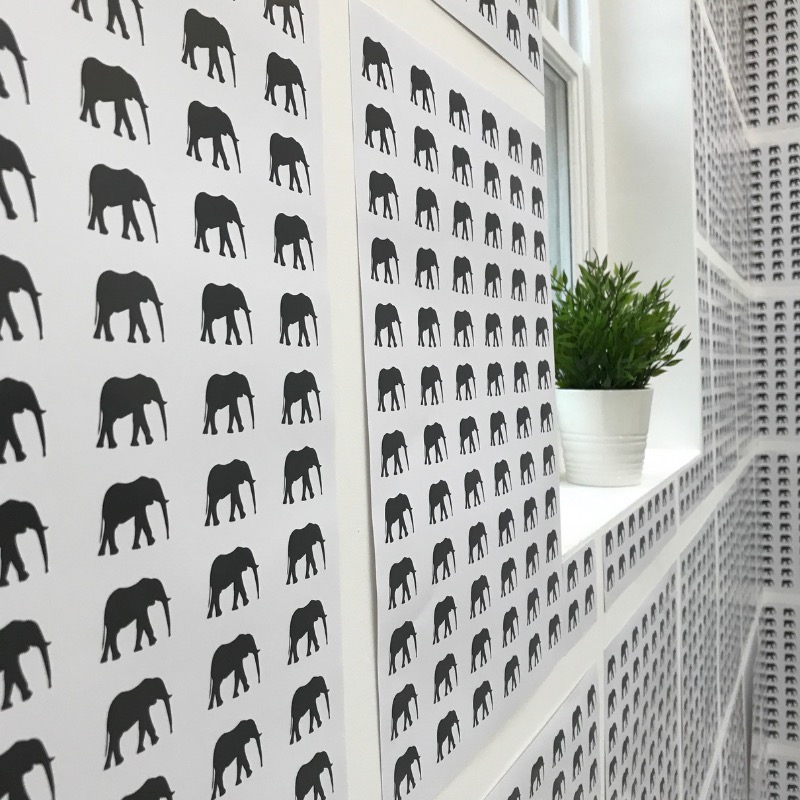
35 Thousand Elephants
Holly has developed a ‘travelling design exhibition’ which moulds itself site-specifically to galleries and public buildings, showing the visitor what the annual poaching rate of elephants in Africa looks like.
Her elephant silhouette is repeated across every surface of a room.
The HME exhibitions are accompanied by outreach work with local schools and community groups.
(The WFRD website also provides free school educational resources and activities).
The content is safe for her young audience.
Holly has chosen to depict live elephants rather than the gory scenes of their death.
The only shock tactics she uses are the simple facts of the numbers. As a designer, she makes them unavoidable.
The Power of Partnerships
Holly’s vision now includes mutually beneficial partnerships in which corporations can promote themselves by supporting her and the HME / WFRD campaigns.
Her strong graphic skills and adventuring attract top clients.
She provides a readymade graphics package to drop into her patrons’ social media and email newsletters.
Holly Budge is a master of Social Media Marketing.
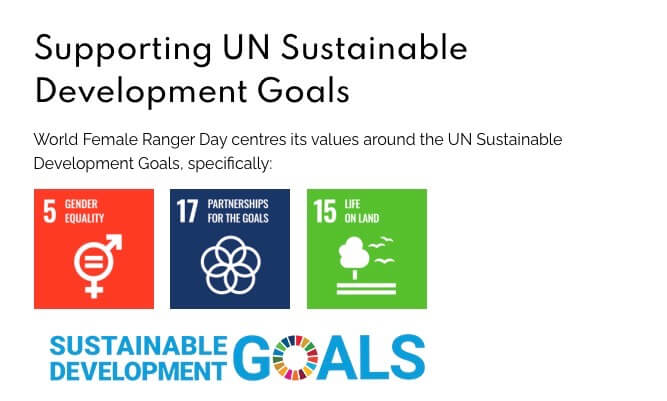
Raising Awareness – To What End?
This is the conceptual beauty of Holly’s vision.
She doesn’t leave her audience baffled and depressed. She stirs them into action.
How Many Elephants has a sister campaign, World Female Ranger Day.
Each campaign drives traffic to the other, with HME being a fundraising charity supporting female rangers to protect the elephants.
Literally putting boots on the ground.
WFRD is everything I love in a charity. It is grass roots. It empowers and enables women. In my opinion, it’s a genius creative solution to a problem that know one else has been able to solve.
In addition, it meets three UN sustainable development goals, which in turn validate it and will spread its message and model internationally.
Design for Change
What began as a concept for a necklace has become a world-changing charity raising £400,000 to date.
Its sister charity, the WFRD website has a live feed where you can see donations dropping in real-time.
They flood in, as people donate the specific price of a pair of boots (£10) or upgrades to a patrol vehicle (£100).
You can read our blog about it here.
It’s tangible, result-driven activism art and I love it!
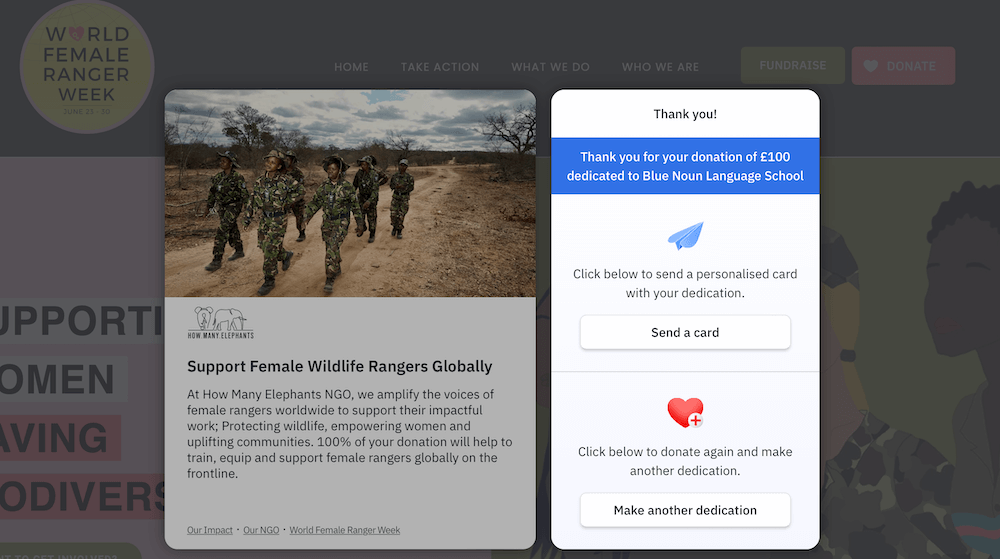
Further information
Find out more about Holly here.
The How Many Elephants campaign is here.
Get involved with WFRD here:
Many Thanks
A huge thank you to Margot Dempsey for taking the time to explain How Many Elephants to me over Zoom and answering all my questions. Thank you to Holly Budge for being an inspiration, for imagining the world a much better place and for setting about making it happen.
English for Designers | English Language Skills for Creatives
I hope you have found the content interesting and the language useful.
Blue Noun Language Hub are an English language School in Scotland.
Our language school offers English language immersion courses to alternative-minded culture-loving professionals.
We also offer artist-led online English coaching to creatives with our sketchbook English course.
Now you can learn English without leaving your studio!
Learn more here.
English Language Tip
One final tip: Some languages still use the term ‘Primitive Art‘ to talk about African, Indonesian or any other non-Western art. This is an outdated prejudiced term with derogatory connotations. Use the term ‘Ethnographic Art’ instead.
Blue Noun English Language Challenge
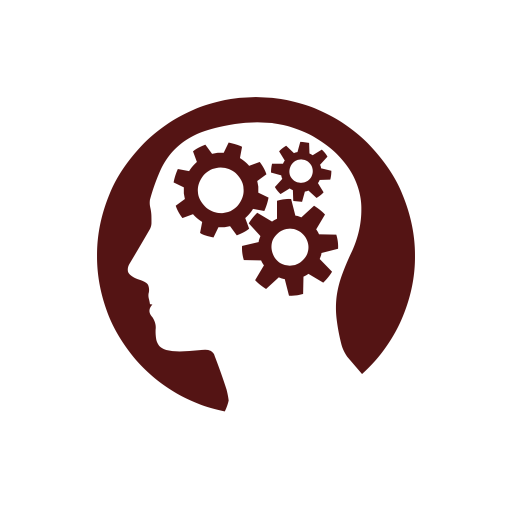
Your Blue Noun English Language Challenge is:
“Tell us about a good design used for social good”
Practice here! As usual, write as much as you like in the comments – and if you would like us to check & correct your English, write CP (correct please) at the end.
Live language learning!

